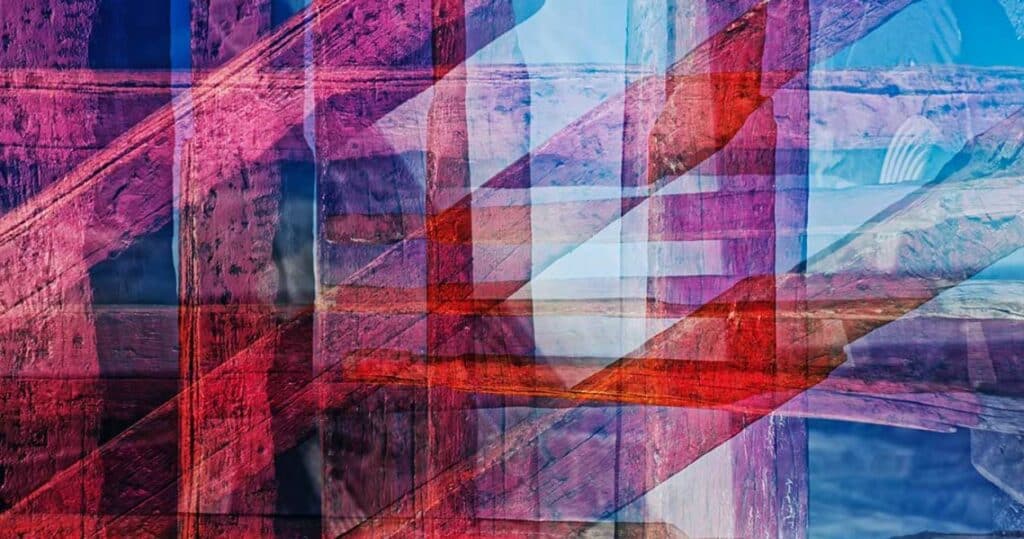“Unveiling the Odyssey: The Evolution of Abstract Art”
In this article, “The Evolution of Abstract Art: 10 Famous Artists And Works”. we’ll talk about what abstract art is and how it has changed over time. We’ll also tell you about 10 important artists who have made important contributions to this interesting art movement.
Art has always been a reflection of how people feel, what they see, and what they think. Abstract art is one of the most interesting and important movements in the art world. This form of artistic expression has changed the way people think about what art should look like and how it should make people feel.
Abstract Art: What It Is and How It Evolved
Abstract art is art that doesn’t try to show the outside world as it really is. It may use shapes, colors, lines, and textures to make a pleasing composition or to show how someone feels or what they think. Abstract art can be flat, like drawings, paintings, and prints, or it can be three-dimensional, like sculptures and installations.
Here’s a quick look at what abstract art is and how it came to be:
- Early Developments: The late 19th-century movement known as Impressionism, which emphasized light and atmosphere, is considered to be the beginning of abstract art. Post-Impressionism was all about using color and shape to make a statement.
- The Early 20th Century: At the beginning of the 20th century, Cubism broke shapes into geometric planes. Wassily Kandinsky was the first artist to make art that didn’t look like anything. This was the start of abstract art.
- Abstract Expressionism: Abstract Expressionism began in the middle of the 20th century. Artists like Jackson Pollock and Willem de Kooning made large, spontaneous works in this style.
- Late 20th Century and Beyond: Movements like Minimalism and Post-Painterly Abstraction showed how art changed in the late 20th century. Abstract artists today experiment with many different styles, which are often affected by social, political, and environmental factors.
Different Styles of Abstract Art
There are many kinds of abstract art, and each has its own style and way of doing things. Here are some of the most common kinds of abstract art:
- Cubism: Cubist artists broke up objects into many geometric planes so they could look at them from different angles.
- Abstract Expressionism: Artists who did abstract expressionism made large paintings that were often spontaneous and had a lot of movement.
- Color Field Painting: Painters in the Color Field movement used big areas of color to give the impression of space and depth.
- Minimalism: Artists who practiced minimalism used simple geometric shapes and basic colors to make works that are both beautiful and interesting to think about.
- Post-Painterly Abstraction: Artists in this movement tried out new materials and methods, like acrylic paint and collage.
10 Key Artists of Abstract Art Around the World
Abstract art, which emphasizes form, color, and non-representation, has captivated the art world for over a century. This movement challenges representation and encourages viewers to connect emotionally with art. Many pioneering abstract artists have contributed to the movement. Here are 10 artists who have left an indelible mark on abstract art, each bringing their own vision and creativity to this dynamic and evolving genre:
1. Wassily Kandinsky

People often say that Wassily Kandinsky is the father of abstract art. His creative use of color, shape, and form in works like “Composition VII” helped start the abstract art movement. Kandinsky’s experiments with the emotional and spiritual power of abstraction have had a lasting effect on the art world.
key Aspects: Wassily Kandinsky
| Aspects | Description |
| Life Span: | 1866-1944 |
| Known For: | Father of Abstract Art |
| Key Works: | “Composition VII,” “Yellow-Red-Blue” |
| Techniques Used: | Color theory, non-objective painting |
| Influenced by: | Impressionism, Fauvism, Russian folk art |
| Artistic Movement: | Abstract Expressionism |
| Awards and recognitions: | Bauhaus teacher, The Order of Saint Anne |
2. Kazimir Malevich

Kazimir Malevich is known for his famous painting “Black Square,” which was a turning point in the history of abstract art. He thought that abstraction was pure and wanted to make art that went beyond the physical world. This led to the birth of Suprematism.
key Aspects: Kazimir Malevich
| Aspects | Description |
| Life Span: | 1878-1935 |
| Known For: | Suprematist Pioneer |
| Key Works: | “Black Square,” “White on White” |
| Techniques Used: | Suprematism, geometric abstraction |
| Influenced by: | Cubism, Futurism, Icon painting |
| Artistic Movement: | Suprematism |
| Awards and recognitions: | N/A |
3. Pablo Picasso

Picasso is best known for his part in the Cubist movement, but his creative approach to art broke down old rules. His groundbreaking painting, “Les Demoiselles d’Avignon,” and other Picasso’s paintings paved the way for abstract art by going against what was expected of art at the time.
key Aspects: Pablo Picasso
| Aspects | Description |
| Life Span: | 1881-1973 |
| Known For: | Cubism, Artistic Innovation |
| Key Works: | “Les Demoiselles d’Avignon” |
| Techniques Used: | Cubism, Analytic Cubism, Synthetic Cubism |
| Influenced by: | African art, Iberian sculpture |
| Artistic Movement: | Cubism |
| Awards and recognitions: | Nobel Prize in Literature (1964) |
4. Georges Braque

Georges Braque was a key figure in the development of cubism because he worked closely with Picasso. His work was mostly about breaking things down into geometric shapes and facets, which helped set the stage for abstract art.
key Aspects: Georges Braque
| Aspects | Description |
| Life Span: | 1882-1963 |
| Known For: | Co-creator of Cubism |
| Key Works: | “Violin and Candlestick,” |
| Techniques Used: | Cubism, Analytic Cubism, Synthetic Cubism |
| Influenced by: | African art, Iberian sculpture |
| Artistic Movement: | Cubism |
| Awards and recognitions: | Nobel Prize in Literature (1964) |
5. Jackson Pollock

Jackson Pollock was a well-known member of the Abstract Expressionist movement. His groundbreaking drip paintings, like “Autumn Rhythm,” pushed the limits of gestural abstraction and let people see the raw energy of the creative process.
key Aspects: Jackson Pollock
| Aspects | Description |
| Life Span: | 1912-1956 |
| Known For: | Drip Painting, Abstract Expressionism |
| Key Works: | “Autumn Rhythm,” “No. 5, 1948” |
| Techniques Used: | Drip painting, action painting, gestural |
| Influenced by: | Surrealism, Mexican muralism |
| Artistic Movement: | Abstract Expressionism |
| Awards and recognitions: | N/A |
If you’re interested in modern art, you won’t want to miss our article on Famous New Media Artists to Watch. Dive into the fascinating world of digital and multimedia art as we look at the works of innovative artists who are shaping the future of creativity. Read More
6. Mark Rothko

Mark Rothko explored the emotional power of abstraction through his large color-field paintings. His paintings, like “No. 14,” are made up of bright, floating rectangles that make you feel like you’re having a spiritual experience.
key Aspects: Mark Rothko
| Aspects | Description |
| Life Span: | 1903-1970 |
| Known For: | Color-field Painting |
| Key Works: | “No. 14,” “Untitled” |
| Techniques Used: | Color-field painting, abstract expressionism |
| Influenced by: | Mythology, Surrealism, European modernism |
| Artistic Movement: | Abstract Expressionism |
| Awards and recognitions: | N/A |
7. Willem de Kooning

Willem de Kooning was another well-known abstract expressionist. His paintings often had bold, busy brushwork. His famous painting “Woman I” shows how abstract art can be used to say a lot.
key Aspects: Willem de Kooning
| Aspects | Description |
| Life Span: | 1904-1997 |
| Known For: | Abstract Expressionism |
| Key Works: | “Woman I,” “Excavation” |
| Techniques Used: | Gestural abstraction, figurative elements |
| Influenced by: | Picasso, Cubism, and Surrealism |
| Artistic Movement: | Abstract Expressionism |
| Awards and recognitions: | Presidential Medal of Freedom (1964) |
8. Kazuo Shiraga

Kazuo Shiraga was a Japanese Gutai artist who took a new approach to abstraction by painting while his feet were suspended above the canvas. His abstract works, like “Chijikusei Goten” (Palace Soars through Space), have a lot of movement and are very physical.
key Aspects: Kazuo Shiraga
| Aspects | Description |
| Life Span: | 1924-2008 |
| Known For: | Gutai Art Movement |
| Key Works: | “Chijikusei Goten” |
| Techniques Used: | Direct bodily engagement with paint |
| Influenced by: | Abstract Expressionism, Japanese calligraphy |
| Artistic Movement: | Gutai Art Movement |
| Awards and recognitions: | N/A |
9. Agnes Martin

Agnes Martin’s calm, grid-based abstractions explore ideas of transcendence and purity. Her minimalist approach to abstraction, like in “Untitled #1,” makes people think about the subtleties of shape and color.
key Aspects: Agnes Martin
| Aspects | Description |
| Life Span: | 1912-2004 |
| Known For: | Minimalist Abstraction |
| Key Works: | “Untitled #1,” “Wheat” |
| Techniques Used: | Grid-based abstraction, minimalism |
| Influenced by: | Taoist philosophy, nature |
| Artistic Movement: | Minimalism |
| Awards and recognitions: | National Medal of Arts (1998) |
10. Frank Stella

Frank Stella is one of the most important people in minimalism. He is known for his geometric and symmetrical pieces. His series of “Black Paintings” challenged traditional ideas about painting by stripping the form down to its most basic parts.
key Aspects: Frank Stella
| Aspects | Description |
| Life Span: | b. 1936 |
| Known For: | Minimalism |
| Key Works: | “Black Paintings,” “Harran II” |
| Techniques Used: | Geometric abstraction, minimalism |
| Influenced by: | Abstract Expressionism, Cubism |
| Artistic Movement: | Minimalism |
| Awards and recognitions: | Praemium Imperiale (2017) |
If you’re captivated by art beyond the canvas, check out our article on the vibrant world of Famous Street Artists, where creativity spills onto the streets in a riot of color and expression!
Abstract art is a great example of how creative people are and how art is always changing. It makes us think, makes us feel, and asks us to look at the world through a different lens. As we’ve looked at the history of abstract art and its most important figures, we’ve seen how this movement has grown, changed, and inspired both artists and viewers. Whether you like the bold lines of Abstract Expressionism or the simple elegance of Geometric Abstraction, abstract art is a journey into the world of the non-representational that is both varied and endlessly interesting.
FAQ
When did abstract art come into being?
Abstract art came about at the end of the 19th century and the beginning of the 20th. It was different from traditional representational art.
How do abstract artists choose the colors they use?
Artists often choose colors in abstract art based on how they want the viewer to feel and how they want to express themselves.
Is there meaning in abstract art?
Yes, abstract art often has meaning, but it may not be obvious at first. This meaning can come from symbols, feelings, or the artist’s message.





